Eaglet bicycles: history and characteristics

Soviet children were not spoiled by a multitude of toys, computer games and other modern achievements. But this does not mean at all that their childhood was boring and uninteresting. It's just that in the second half of the twentieth century, children and adolescents had different values and priorities.
A special event in the child's life was the purchase of a teenage bicycle. This happened already at a conscious age - from 8 to 15 years. The presence of such a vehicle indicated the achievement of a certain stage of independence, since the differences from adult models were only in size.
The bicycle "Eaglet" took its place of honor in the list of the most desirable gifts for boys of the Soviet era. So what was so attractive about him? Let's try to find out.

Historical facts
The birthplace of the Orlyonok bicycle was the Minsk Motorcycle and Bicycle Plant (MMVZ). The equipment of the enterprise was imported from Germany, and the first drawings of the vehicles produced were developed taking into account the experience of Western colleagues. "Eaglet" was one of the three models that were the first to leave the assembly line of the plant. The same teenage bicycle, only a female version, had the name "Swallow".
In Belarus, their production was launched in 1949 and lasted until 1951. In the same year, production moved to another plant - in the Baltics. Bicycles for teenagers are now being assembled at the Siauliai Motor Cycle Plant. They also began to be called in Lithuanian:
- for boy - "Erelyukas" (eaglet);
- for girl - "Kregzhdute" (swallow).
In its original form, the "Eaglet" was produced up to 1978.Then its frame underwent a slight modification, but this model was also very popular among teenagers.
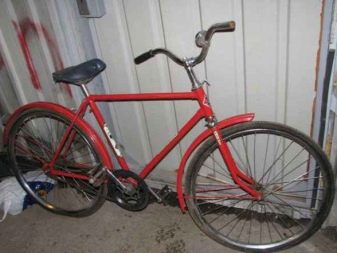
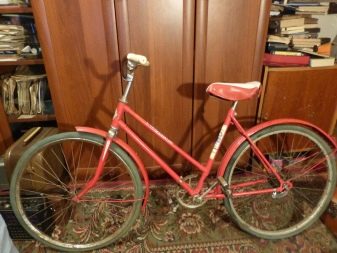
Dimensions and specifications
The weight of the bike was just over 12 kg, and its dimensions are designed for a load of up to 70 kg. The base of the model is quite short - only 975 mm, while the frame height is 440 mm. The large sprocket driving the chain had 44 teeth, and the small one had 19. The chain itself consisted of 100 links. A free-wheeling brake sleeve was put on the rear wheel. The front brake was missing.
In the original configuration of the "Eaglet" the upper frame was double, and behind the seat it was divided and passed into the fork of the rear wheel with a smooth bend. Many bike owners loved this, as with such a wide and curved frame it was convenient to lift and carry it. Subsequently, the modernized model became a slightly smaller copy of the "Ukraine" bicycle with a straight frame.
The diameter of the bicycle wheels is 24 inches or 533 mm. Tire width - 37 mm. The height of the steering wheel and seat could be adjusted by locking in the desired position.
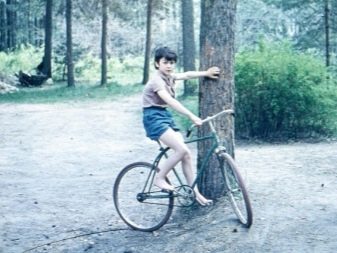

Complete set and design
The Eaglet bicycle was a simple and straightforward mechanism. There was nothing superfluous in its design, and the following components were attached to each copy:
- the pump, which was mounted on holders between the upright strut and the rear wheel;
- a bag with a tool necessary for repairs - it was fixed with straps behind the seat;
- set for gluing cameras;
- oiler with appropriate content;
- call;
- trunk;
- rearview mirror.
Additionally, it was possible to install a flap for the chain and a headlamp, which was connected to the generator.
This bicycle model was, as it were, an intermediate link between child and adult models. And it was he who had to withstand the full force of boyish recklessness. The Eaglet could be driven both on city asphalt and bumpy country roads. He withstood everything.
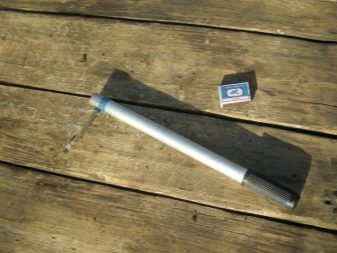

Possible problems
Like any other equipment, the Eaglet bicycle was periodically exposed to any breakdowns. The most common problems that had to be eliminated were:
- falling off the chain;
- puncture of the tire;
- a wheel bent by a figure eight.
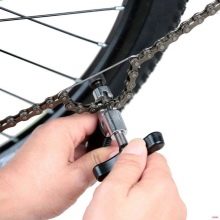
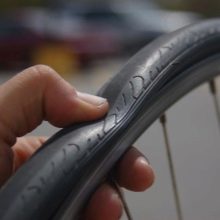

Since the presence of this vehicle imposed a certain degree of responsibility on the owner, it was necessary to learn how to repair it independently.
Tuning variations
Today's teenage bicycles are already being marketed as bright and beautiful, with many necessary and unnecessary gadgets. And in Soviet times, the "Eaglet" was a specific green color and was produced in a clearly defined configuration. Each owner of this "iron horse" wanted to stand out from the others, so the boys tuned their bikes as best they could. Any available means were used:
- the steering wheel and frame were wrapped with electrical tape, and if it was possible to get two or three colors, then the view was considered simply gorgeous;
- trimmed parts and the saddle with fur or velvet;
- painted and painted wings;
- thin colored wire, threads with lurex or film from bobbins were wound on the knitting needles;
- homemade mud flaps made of pieces of rubber or linoleum were hung on the fenders.
Fans of fast driving installed a motor, and the "Eaglet" became a motorbike. It was also possible to equip it with a distance traveled counter.
In general, this bicycle was a reliable companion for a teenager of that time. Some owners of old private houses still keep them in garages or attics as a memory of a happy, carefree childhood.
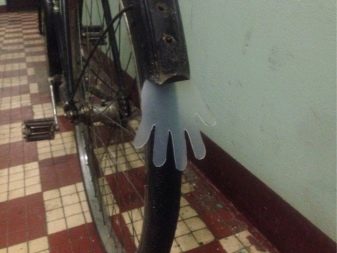
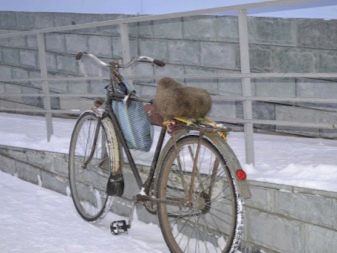
For information on how to update the Eaglet bike, see the next video.








